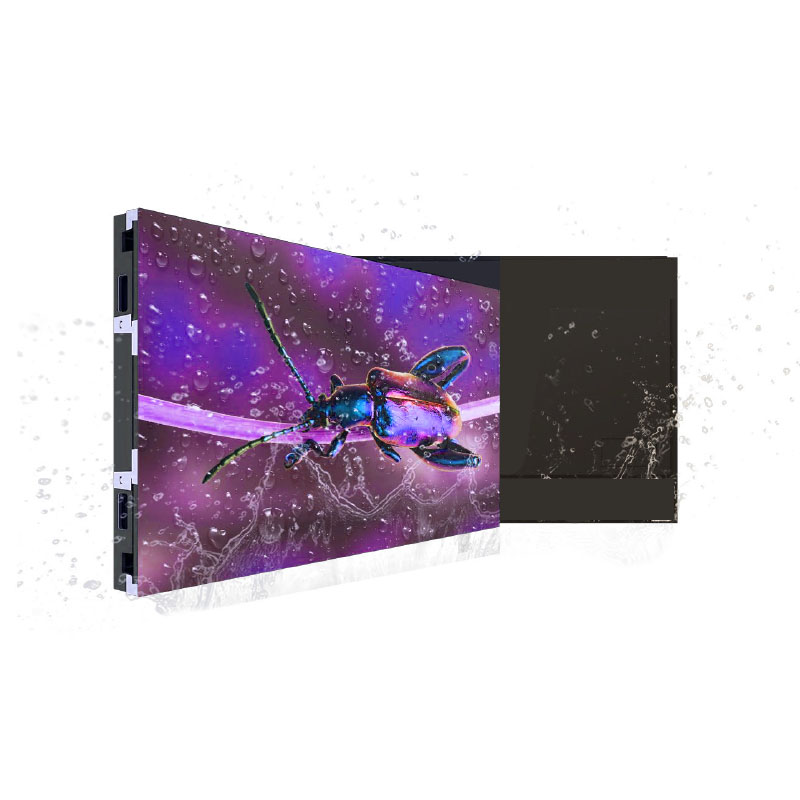How Do LED Screens Transform Visual Experiences?
2025-09-03
In today’s fast-paced digital world, LED screens have become an essential part of our daily lives. From massive outdoor billboards to immersive stadium displays and high-resolution indoor signage, LED screens have revolutionized the way we share information, advertise products, and create visual experiences. Whether you are a business owner looking to enhance brand visibility or an event organizer seeking seamless display solutions, understanding LED screens’ technology, specifications, and applications is critical to making the right investment.
What Are LED Screens and How Do They Work?
LED screens are electronic display systems that use light-emitting diodes (LEDs) to produce vibrant and high-quality images and videos. Unlike traditional display technologies, LED screens generate their own light, resulting in brighter visuals, better contrast, and superior energy efficiency.
How LED Screens Work
An LED screen is made up of multiple LED modules arranged in a grid. These LEDs emit red, green, and blue (RGB) light, which combine to create millions of colors. The screen’s control system processes image and video signals and translates them into brightness levels for each pixel, ensuring crisp visuals even under direct sunlight.
Key benefits of LED technology include:
-
Brightness & Clarity: LED screens deliver outstanding brightness, making them ideal for both indoor and outdoor use.
-
Energy Efficiency: LEDs consume less power compared to traditional LCD and plasma displays.
-
Durability: With a lifespan of up to 100,000 hours, LED screens are built to last.
-
Scalability: Modular panels allow for flexible sizing and seamless installations.
Types of LED Screens and Their Applications
LED screens are versatile and can be used in various industries. Choosing the right type depends on your intended use, location, and audience size. Below are the most common types and their applications:
a) Indoor LED Screens
Designed for indoor environments like shopping malls, conference rooms, airports, and retail stores, these screens provide high-resolution displays with closer pixel pitches for crisp images.
Applications:
-
Corporate presentations
-
Retail advertising
-
Indoor events and exhibitions
b) Outdoor LED Screens
Outdoor screens are engineered to withstand weather conditions and deliver high brightness levels, making them perfect for open-air environments.
Applications:
-
Billboards and roadside advertising
-
Stadium scoreboards
-
Outdoor concerts and festivals
c) Flexible LED Screens
Flexible displays can bend and curve, offering unique design possibilities for creative visual presentations.
Applications:
-
Architectural façades
-
Immersive event installations
-
Artistic display projects
d) Transparent LED Screens
These screens allow light to pass through, enabling viewers to see behind the display while still enjoying vibrant visuals.
Applications:
-
Glass window advertising
-
High-end retail stores
-
Futuristic building designs
LED Screens Technical Specifications
When investing in an LED screen, understanding its technical specifications is essential for ensuring optimal performance. Below is a breakdown of key parameters:
| Specification | Description |
|---|---|
| Pixel Pitch | Distance between pixels, measured in millimeters. Smaller pitch = higher resolution. |
| Brightness | Measured in nits; higher values are ideal for outdoor use. |
| Resolution | Number of pixels displayed; determines clarity and detail. |
| Refresh Rate | Frequency of image updates, measured in Hz. Higher rates prevent flickering. |
| Viewing Angle | Maximum angle from which the screen can be viewed without quality loss. |
| Contrast Ratio | Difference between the darkest and brightest parts of an image. |
| Ingress Protection | Indicates resistance to dust and water; essential for outdoor screens. |
| Power Consumption | Average and maximum power usage, influencing energy efficiency. |
Why Pixel Pitch Matters
For indoor displays, a smaller pixel pitch such as P1.8 or P2.5 ensures sharp and detailed images even at close distances. For large outdoor billboards, pitches like P8 or P10 are more cost-effective and ideal for long-distance viewing.
Benefits of Using LED Screens
LED screens are rapidly replacing traditional signage and display solutions due to their superior performance and cost efficiency.
a) High Visual Impact
The brightness and vibrant colors of LED screens make them stand out, capturing attention instantly and enhancing brand visibility.
b) Energy Efficiency
Compared to LCDs and projection systems, LEDs consume significantly less energy, making them environmentally friendly and cost-effective.
c) Long Lifespan & Durability
With lifespans exceeding 100,000 hours, LED screens require minimal maintenance and withstand harsh environmental conditions.
d) Seamless Scalability
LED screens are modular, allowing businesses to create customized display sizes — from small indoor panels to massive outdoor walls.
e) Versatile Applications
From sports stadiums to airports, shopping malls to control rooms, LED screens serve multiple sectors with exceptional performance.
LED Screens FAQs
Q1: How do I choose the right LED screen for my project?
A: Start by defining your installation environment, viewing distance, and purpose. For indoor applications, prioritize high-resolution displays with smaller pixel pitches like P2.5 or P3. For outdoor installations, focus on high-brightness, weatherproof models with pixel pitches around P6 to P10. Always consider your audience size and required visual impact.
Q2: Are LED screens weatherproof and durable?
A: Yes. Most outdoor LED screens are built with high IP ratings (IP65 or above) to resist water, dust, and extreme temperatures. Additionally, LEDs have a long operational life, making them a reliable solution for outdoor advertising, even in challenging weather conditions.
Why Choose RGB LED Screens
When selecting LED screens, choosing a trusted brand ensures superior quality and performance. RGB LED screens deliver stunning brightness, accurate colors, and exceptional durability. With advanced display control systems, energy-efficient technology, and customizable configurations, RGB offers solutions tailored to every industry — from retail and events to transportation and entertainment.
Whether you are upgrading your store displays, planning an unforgettable event, or enhancing audience engagement, RGB LED screens provide a seamless blend of innovation and reliability.
Contact us today to explore the full range of our LED screen solutions and discover how RGB can bring your vision to life.



